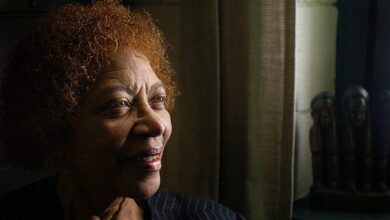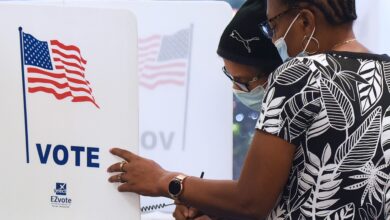Pollution Is Killing Black Americans. This Community Fought Back.

Across the highway from Grays Ferry, the immense P.E.S. refinery, with its lattice of rusting pipes, smokestacks streaked with soot and mammoth holding tanks, swallows up 1,300 acres of land on the banks of the Schuylkill. It is a city in itself, encircled by a chain-link fence topped with barbed wire — nearly the size of Central Park and Arlington National Cemetery combined. For decades, when the sun set, the facility looked like its own vast metropolis, lights flickering throughout the night. The site was first used as a storage facility in Philadelphia a year after the Civil War ended and began refining oil shortly after that. By 1891, half the world’s lighting fuel and more than a third of U.S. petroleum exports came from the refinery.
The Industrial Revolution and the invention of cars drove an insatiable hunger for oil, which became the dominant fuel of the 20th century. As the refinery continued to be a powerhouse in oil production on the East Coast and expanded operations, Philadelphia experienced a significant demographic shift. During the Great Migration, the Black population exploded with waves of new arrivals from the South, and white people moved out of the city. The city’s African-American community went from 251,000 in 1940 to 376,000 in 1950, and peaked at 654,000 residents in 1970.
In 1934 South Philadelphia was redlined: given a D rating — the lowest — by the Home Owners’ Loan Corporation, which outlined the community in red on maps used to determine loan eligibility. Agents of the loan group noted “Negro encroachment in certain neighborhoods.” The Federal Housing Administration later relied on these maps, and its own underwriting manuals pointed to the condition of housing and the race or ethnicity of residents as characteristics that increased the risk of a community receiving a low rating from the agency. As a result, lending institutions issued fewer mortgages in these areas than in other parts of the city, creating entrenched segregation, disinvestment and decay. In South Philly, the proximity of residential areas to factories, including the refinery, most likely contributed to the neighborhood receiving the lowest grade and a label as “hazardous,” making it difficult for residents to get approved for loans to buy homes.
Public housing filled the void. In 1940 the city completed the Tasker Street Homes Project, 125 barracks-like buildings with 1,000 units, taking up 40 acres to the southwest of 30th and Tasker Streets. More followed: Philadelphia received federal funding in 1949 for more than 20,000 low-income public-housing units. The city built Wilson Park, a 650-unit complex across the highway from P.E.S. in 1953, and continued to expand. According to the book “Public Housing, Race and Renewal: Urban Planning in Philadelphia, 1920-1974,” by John F. Bauman, from 1956 to 1967 all of this public housing landed in poor or transitional communities. This included more than a thousand additional units in South Philadelphia. “Black leaders accused the [housing] authority of warehousing as well as ghettoizing the Black poor,” Bauman, the author of several books about urban planning, wrote.
In 1969, when Johnson, the last of nine children, was born, her family lived in the Tasker Street Homes housing project. Her parents had good, stable jobs: Troy as a mechanic for SEPTA, the city’s public-transportation system, Elizabeth as a custodian for the school district. When the couple heard about a good deal on a four-bedroom rowhouse not far away on Dickinson Street with a basement and a yard, they decided to make a move. Troy Johnson’s brother Robert and his wife also bought a home nearby. Sylvia Bennett and her husband, who also lived in the Tasker Street Homes, landed on Dickinson Street as well. At that time, the neighborhood was less than one-third Black; it is now majority Black.
























































